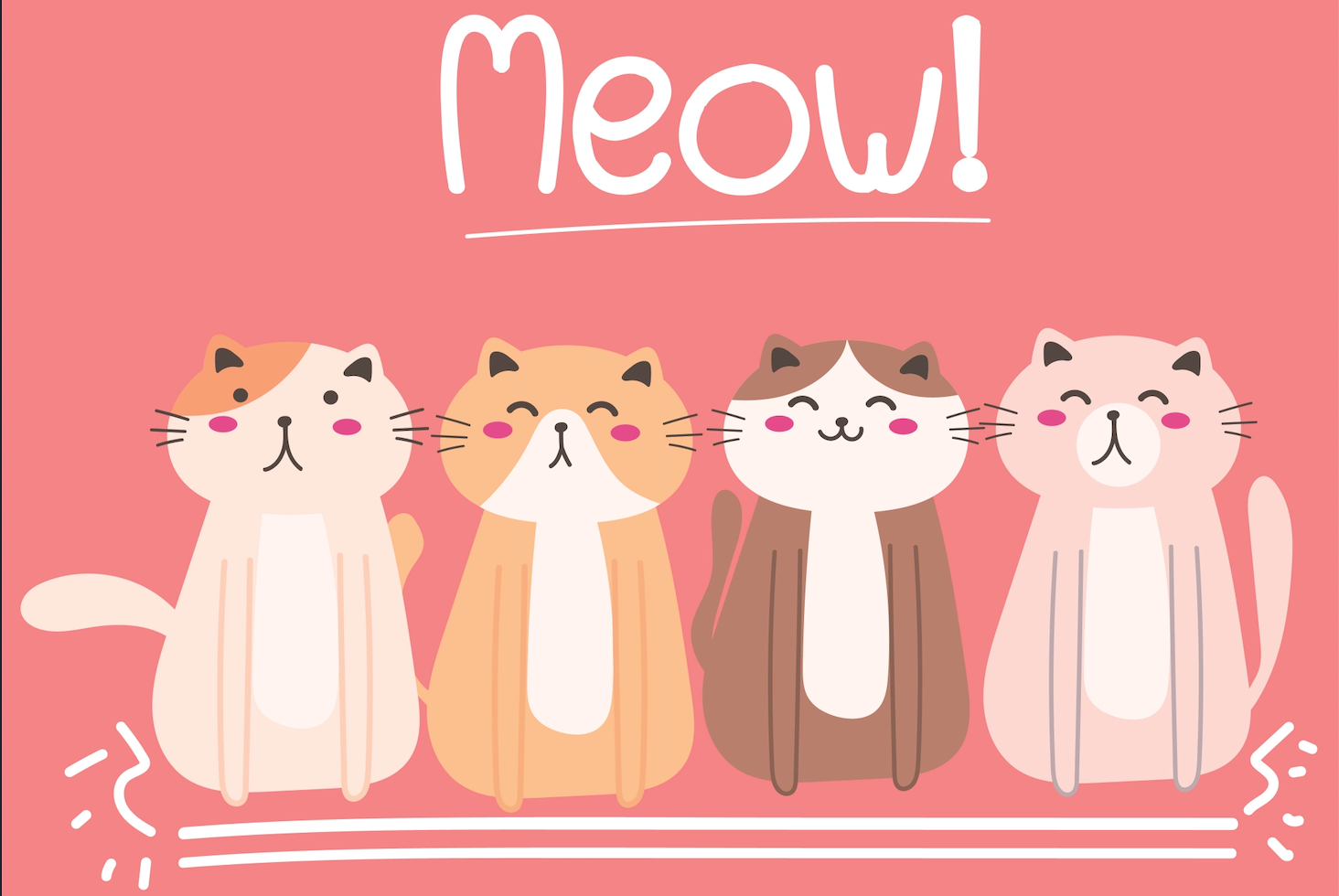How good is your cat with communicating? They may not speak our language. However, they have their own way to communicate through vocalizations and body language. By paying close attention to it, we can get to know about their moods, desires, and even physical conditions. This is why every cat owner should understand what’s meant by those meows, purrs, hisses, and tail swishes. It will eventually help you to strengthen the bond with your cat as well. Read on this guide and we will share more details about the secret language of cats.
Why Do Cats Meow?
Unlike their wild cousins, domestic cats use meowing primarily as a means to communicate with humans rather than other cats. Kittens meow to their mothers when seeking food or warmth, so they carry this behavior into adulthood to elicit care from their human caretakers. Adult cats do not meow frequently to each other, using more subtle vocal cues like growls, yowls, or purring instead. Knowing this key difference can help us better understand when and why our cats are meowing.
Common Types of Meows
Now you have a basic idea on why cats meow. With that in mind, let’s take a quick look at the different types of meows that cats make.
Short, Repeated Meows
A simple meow is your cat’s basic greeting or request for attention when they want playtime, treats, or affection. Repeated, rapid meows often signify excitement, impatience, or that your cat wants you to follow them to something interesting, such as a toy or the food bowl. Think of this vocalization as akin to a person saying “Hello?” when answering the phone.
Long, Drawn-Out Meows
Extended meow songs are reserved for when your cat really wants something right now! This includes mealtimes or demands for treats, requests to enter or exit rooms, or appeals to check out whatever object has currently captured their interest. It may sound like impatient mewling. Give into these squeaky demands with food, affection or access to their desired location.
Low-Pitched Meows
A low-pitched, almost angry series of meows often signals anxiety, frustration or discomfort in your cat. This can occur when facing negative stimuli like the sight or sound of outdoor cats through a window, unfamiliar guests in their home space, or new textures like costumes or furniture. Pay attention to your cat’s body language and remove them from the situation that’s causing the reaction.
High-Pitched Cries
Urgent high-pitched meows or yowling indicate significant distress, pain, or an intruder on their territory. Think of this as similar to a human scream. Check for signs of injury and contact your vet promptly if the crying persists. Frequent nighttime yowling may mean your cat is entering peak mating season. Consider neutering to ease this behavior.
The Soothing Power of Purrs
Though simple in execution, purring serves many complex physical and emotional purposes. Current research suggests cats may purr instinctually from kittenhood into adulthood to stimulate healing and communicate with littermates. Purring indicates a cat is in a calm, content state. The frequencies may promote bone density and tissue regeneration.
Beyond Happiness
While purring indeed demonstrates joy and affection during moments like lap-sitting or playtime, it can also signify stressful or painful states. Cats may purr loudly at the veterinary clinic despite fear and discomfort. Injured cats also often purr, possibly reflecting an instinct to begin the healing process. Pay attention to body language to determine the motivation behind the motor-like rumbling. An agitated cat with flattened ears or a lashing tail requires comfort, while a contented cat likely wants -- and deserves -- affection.
Purring for Care
Some cats adopt excessive purring behaviors like loud squeaking or wheezing purrs directed at their owners as requests for food or care. Cats quickly learn to purr strongly before being fed or receiving treats. Don’t worry about indulging these requests if your cat is healthy. Think of it as positive reinforcement between pet and parent. However, senior cats often develop more persistent, whiny purring later in life that can signal declining health. Schedule a veterinary exam when such vocal habits emerge to address age-related cat issues promptly.
Beyond Meows and Purrs
Cats have an extensive vocabulary of chirps, squeaks, trills and vocalizations beyond their characteristic meows and rumbly purr. Familiarize yourself with these other communication cues:
Body Language Signals
Subtle body language conveys moods. A cat with a question-mark shaped tail and slowly blinking eyes signals contentment. Flattened ears and a thrashing tail indicate anxiety or aggression. Yawning, stretching or sudden stillness all provide behavioral insight.
Chirping or Tweedling
In cat colonies, mothers “chirp” to their kittens, who “tweedle” back when feeding. Domestic cats often retain this babyish two-note chirp into adulthood as a friendly greeting to human owners or when observing prey like birds from the window. Think of a pleasant chirp as your cat saying hello!
Hissing, Growling or Yowling
Feral cats rely on noisier warnings like ominous-sounding growls, screechy caterwauling or fangs-bared hissing to signal hostility and ward off enemies. You may hear these more aggressive vocalizations when your pet spots neighborhood cats outside or feels frightened by guests. This noisemaking is designed to seem scary. Try to remove the trigger and comfort your cat.
Responding to Cat Communication
Now that you know the basics of the secret kitty language, you can start putting those lessons into practice! When your cat meows or purrs, ask yourself these questions to determine the appropriate response:
Does my cat want affection right now or would they prefer space? Overly persistent meowing suggests the former. If their ears flatten or their tail twitches angrily with meows, back away to a non-threatening distance.
Is this a positive request for attention or cues discomfort? Note body language and look for direct eye contact. If kitty holds your gaze while meowing or chirping, they probably want interaction.
Could my cat’s vocalizations signal illness or pain? Any sudden increase in meowing, especially nighttime yowling or whiny meows, merits a trip to the vet just in case. Always err on the side of caution if you notice possible health issues.
Final Words
With routine observation and plenty of affection, you’ll soon master the unique language of your talkative tabby. With enough practice interpreting your cat’s communications, you may find those meows and purrs perfectly predictive. Now wouldn’t that be a feline fairy tale ending?
Have a talkative cat at home? Share your favorite funny meow or epic purr moments in the comments below!


